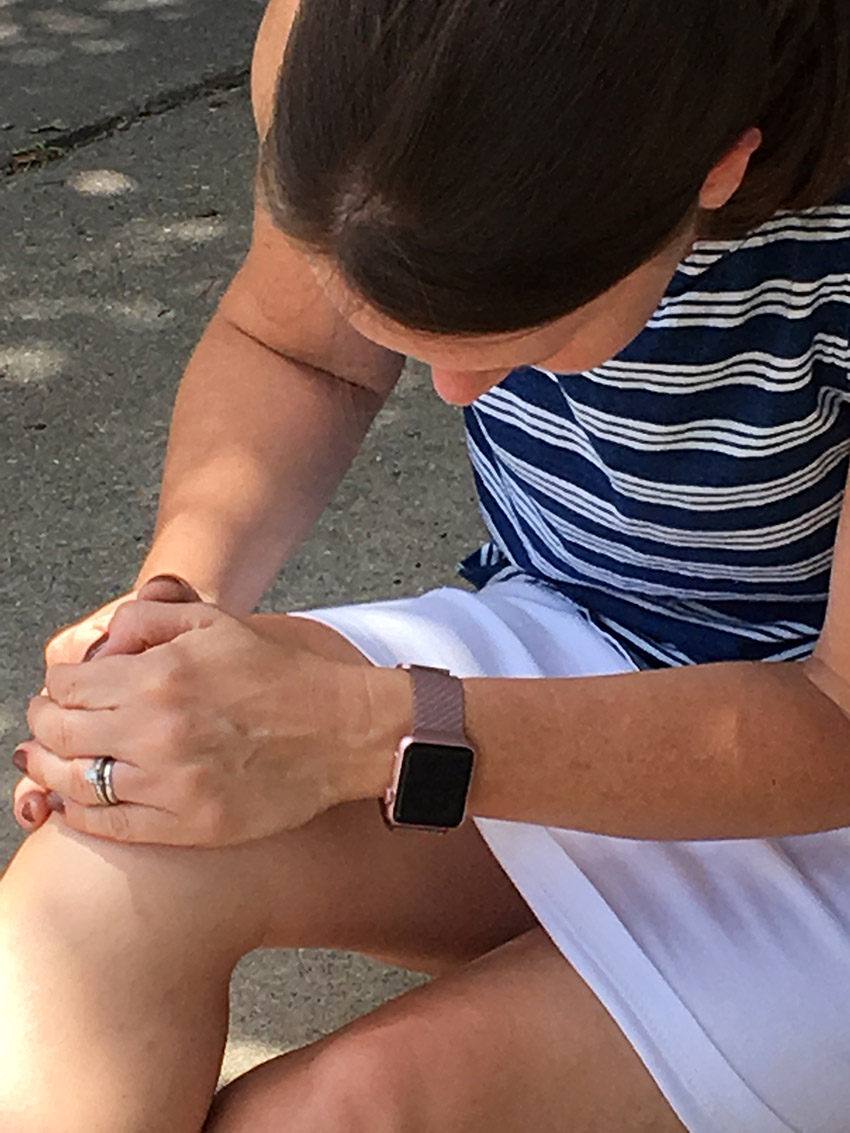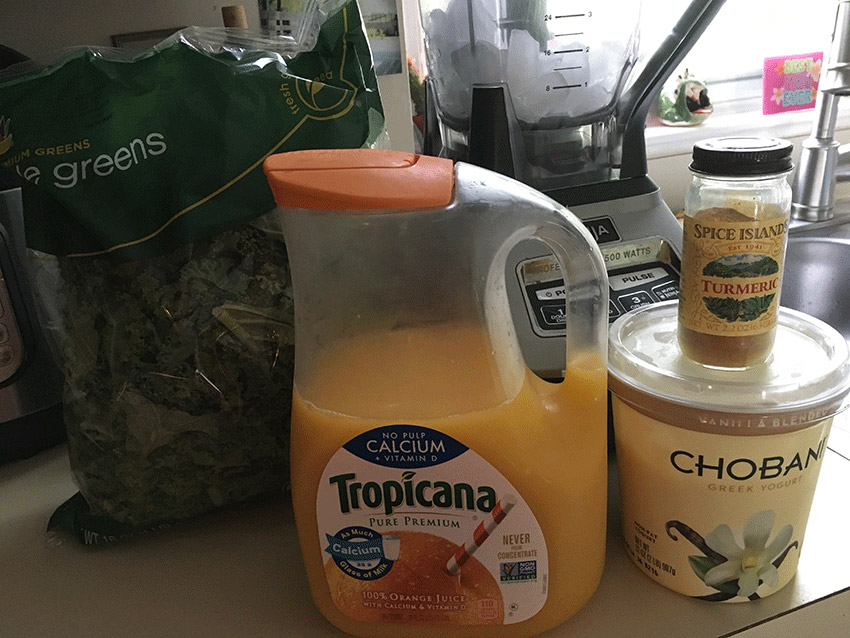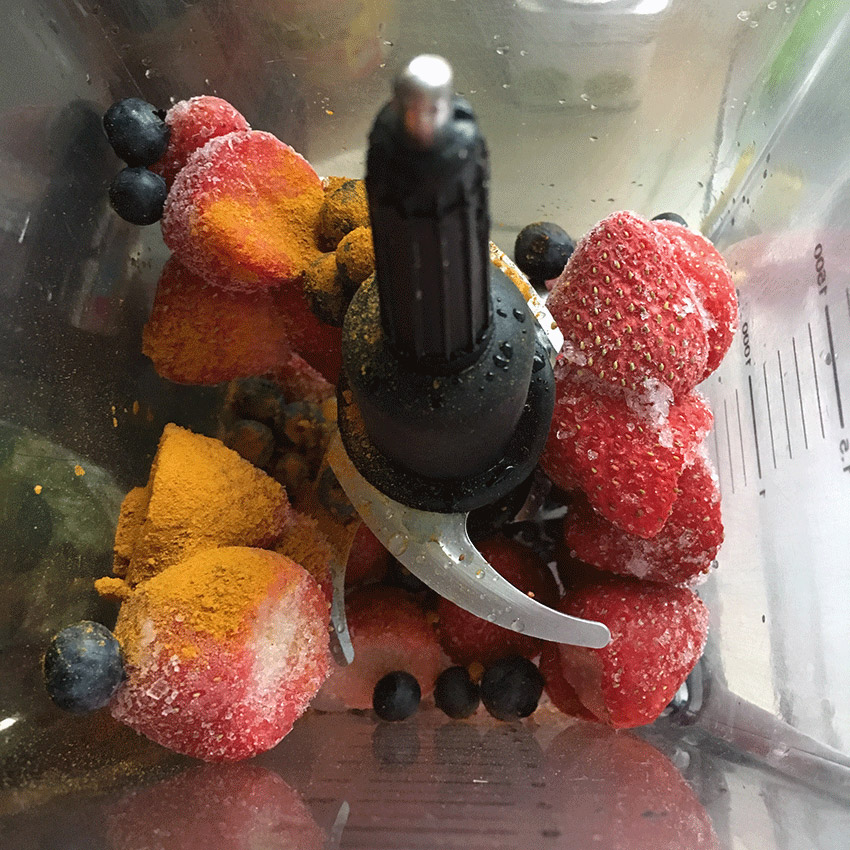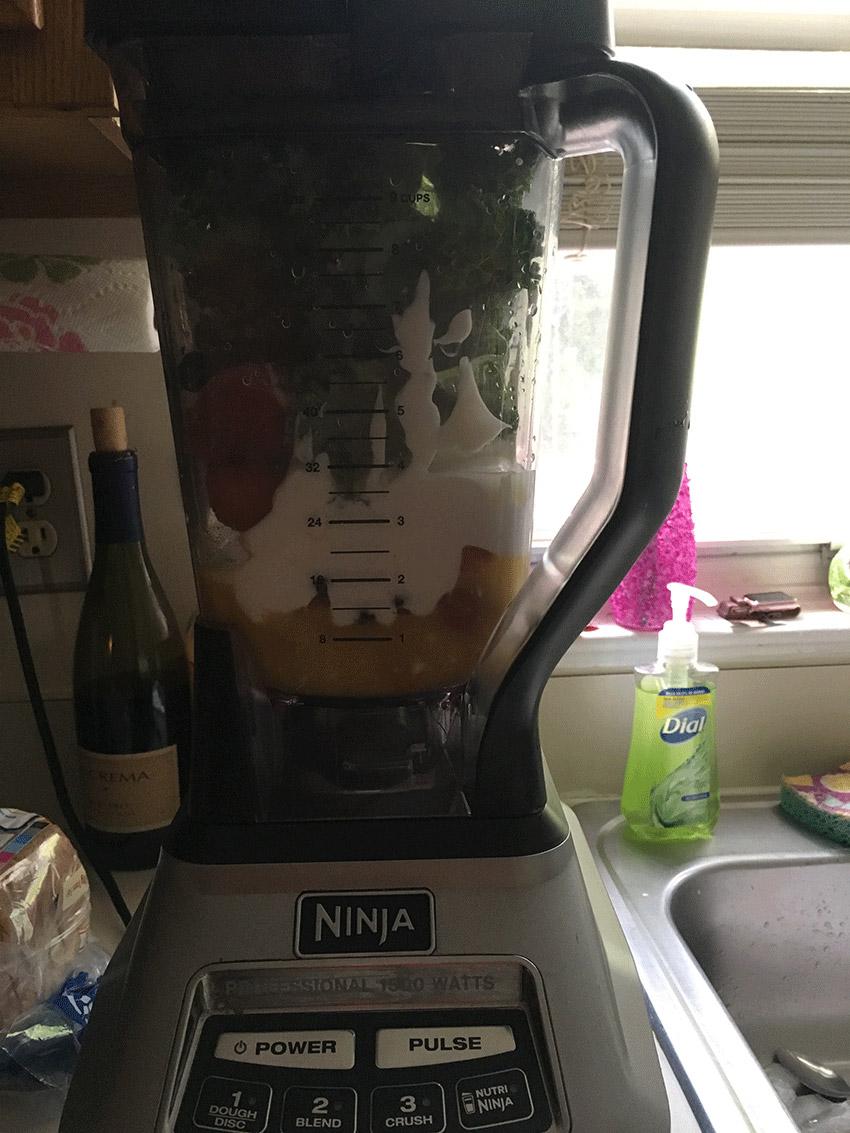Ever since my daughter was born seven years ago, I’ve suffered from knee pain. I still remember the first time I felt it: I was doing what I call the “middle-of-the-night mommy mambo.” You know the one, where you’re creeping out of the room looking like you’re in the middle of a heated round of Twister, eyes squeezed shut, praying that you can get out of there before the baby wakes up. This one mom made it viral, and trust me, she is every mom — myself included.
The source of my knee pain is still undetermined, despite trips to an orthopedist and a rheumatologist over the years. So, I’m always on the lookout for natural pain remedies. When I heard that turmeric can be used to alleviate joint pain and fight inflammation, I thought I would give it a shot. Although I tend to be pretty skeptical about supplements, the benefits of turmeric seem pretty impressive! Aside from using turmeric for pain, you can also use it for teeth whitening, weight loss, better skin, depression, and a host of other things.
What Is Turmeric?
Turmeric comes from the turmeric plant, which grows in many parts of Asia. Curcumin, the active ingredient, is a chemical found in turmeric that gives it the yellow color for which it’s known. In the Western world, our largest exposure to turmeric is in mustard. In the Far East, turmeric is heavily used in a variety of dishes, including curries. Another popular way to consume turmeric is to steep it and make turmeric tea, or “golden tea,” as it’s often called.
In general, though, if you’re wondering how to take turmeric, you can get your daily dose of it through recipes, or by taking capsules — it’s all pretty much the same. There is one caveat, though: if you choose to take turmeric capsules, you need to purchase a high-quality supplement. There are lots of low-quality turmeric supplements out there that cost a lot of money for a fraction of the recommended turmeric dosage. Clearly, you won’t see any benefit from taking those.
Because of this, I would recommend purchasing turmeric capsules from a reputable source, like a natural health-food store or through Amazon, as long as it’s a brand you know you can trust.
For my experiment, I decided to take one turmeric capsule every day for one week, supplementing that by cooking it into one dinner recipe and making smoothies.
Day 1

I purchased my turmeric capsules from among the wide variety sold at Whole Foods. I hadn’t done much research yet, so I was unsure what kind to buy. Surprisingly, some of the brands were pretty expensive, clocking in at more than $50. I chose a mid-priced variety (that happened to be 50% off). It seemed pretty legit as far as dosage and ingredients. That night, I took my first supplement at bedtime.
Day 2

Although I knew it was probably too early to start noticing any benefits of turmeric, I was hoping that my knees would at least feel somewhat better, but that wasn't the case. I did some research on turmeric recommended dosages because I was wondering how much I should take daily. I found that in order for it to be effective for joint pain, I would need to take nearly 1,000 mg each day. Although the turmeric pills I chose only contained 320 mg, the turmeric recommended dosage for the brand was only one capsule per day. There was also a warning not to exceed the suggested use, so I decided to stick with just one instead of doubling or even tripling the dosage, even though I realized it probably wouldn’t be very effective for this experiment.
Day 3

On day three, I woke up as stiff as ever, but it occurred to me that I could supplement my turmeric capsules with recipes. I made turmeric chicken with spinach satay, from bigoven.com. It was a great recipe, and I love that it incorporated super-healthy spinach as well, but I can taste turmeric in just about anything, and this recipe was no exception.
What does turmeric taste like? To me, it has a very musty taste, and it’s not a taste I personally find desirable at all (that's why I initially chose capsules for this experiment).
As for the recipe, maybe some added spices would kick this one up a notch. At the end of day three, I took the supplement and hoped that cooking with turmeric would increase the effectiveness and reduce my knee pain on day four.
Day 4

There are certain times of the month when my knees hurt more than others. Sadly, this experiment must have coincided with that time, because on day four, I could swear my knees hurt even more than usual. So, I figured, why not make a turmeric smoothie? You can hide pretty much anything in a smoothie, and they’re a great way to incorporate more than one nutritional heavy-hitter without feeling like heaving. My smoothies are all self-made; I just throw in whatever I see fit on that particular day. Here’s what I added on day four:
Turmeric Smoothie
- 1 small bag frozen strawberries
- 1.5 cups orange juice
- handful of blueberries (more if desired)
- 2 to 3 large handfuls of greens (I used kale, but you can use anything)
- 1 to 2 tsps. turmeric
- dash of vanilla
- 1 cup vanilla Greek yogurt (skip for a thinner smoothie)
Directions
Blend and enjoy!
As far as masking the taste of turmeric, this smoothie was a success. I would have to wait for day five to see if it would help my painful knees, though!
Day 5

After four whole days of taking turmeric capsules and trying other things with turmeric added, I still wasn’t seeing any reduction in my joint pain. I decided to continue with the smoothie, though, and made another one to go with my turmeric pills.
Day 6

Although my knees were still painful, I noticed one of the side effects of turmeric that I wasn’t expecting. I looked in the mirror and noticed that my skin looked better than it has in years. With fewer breakouts and a noticeable glow, I couldn’t help but wonder what was going on. That’s when I realized that the only thing I was doing differently was the turmeric. This is one of the turmeric side effects I can definitely live with!
If you’d like to try turmeric for skin another way, you can make a face mask. Helloglow.co has a fantastic mask that uses only four ingredients, and I’m definitely planning to try it and enjoy one of turmeric's best benefits!
Day 7
After a whole week of taking turmeric for joint pain, I really didn’t notice much of a difference at all in how I felt. I know there have been several studies performed indicating that turmeric can be an effective substitute for aspirin, but this wasn’t my experience.
Conclusions
I’ve decided to continue using turmeric pills as part of a healthy diet and lifestyle. In an effort to save money, I chose a supplement that didn’t deliver the turmeric recommended dosage that I need. I’m planning to return to the store and choose one that contains 1,000 mg to see if that makes a difference. In the meantime, though, I’m enjoying using turmeric on my skin to make it look younger, brighter, and healthier.
If you think this article could help someone else who is curious about turmeric, please SHARE it with them.




